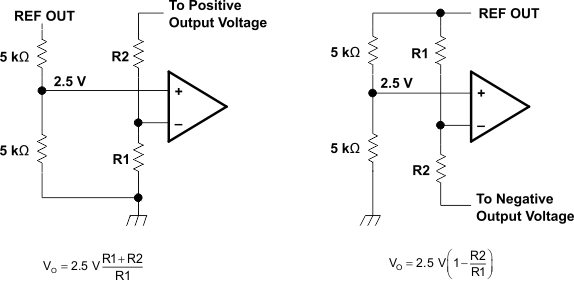SLVS077F April 1977 – January 2021 SG2524 , SG3524
PRODUCTION DATA
- 1 Features
- 2 Applications
- 3 Description
- 4 Revision History
- 5 Pin Configurations and Functions
- 6 Specifications
- 7 12
- 8 Parameter Measurement Information
- 9 Detailed Description
- 10Layout
- 11Device and Documentation Support
Package Options
Refer to the PDF data sheet for device specific package drawings
Mechanical Data (Package|Pins)
- NS|16
- N|16
- D|16
Thermal pad, mechanical data (Package|Pins)
- D|16
Orderable Information
10.2.1.2.2 Voltage Reference
The 5-V internal reference can be employed by use of an external resistor divider network to establish a reference common-mode voltage range (1.8 V to 3.4 V) within the error amplifiers (see Figure 10-5), or an external reference can be applied directly to the error amplifier. For operation from a fixed 5-V supply, the internal reference can be bypassed by applying the input voltage to both the VCC and VREF terminals. In this configuration, however, the input voltage is limited to a maximum of 6 V.
 Figure 10-5 Error-Amplifier Bias Circuits
Figure 10-5 Error-Amplifier Bias Circuits